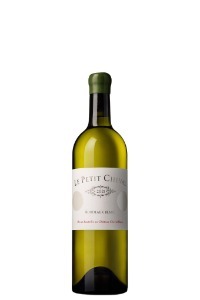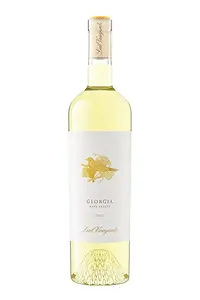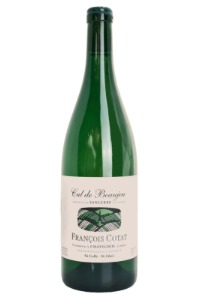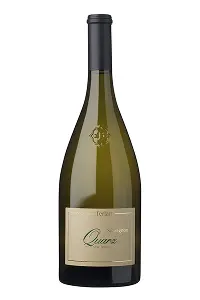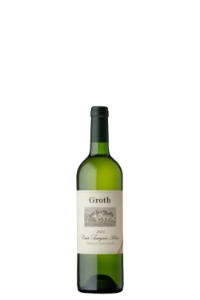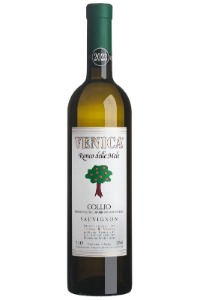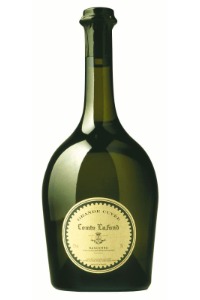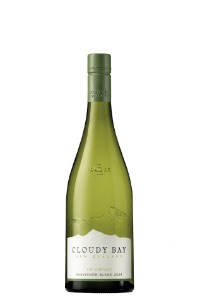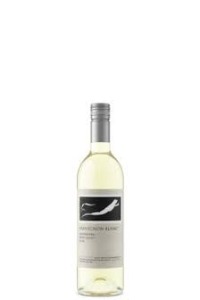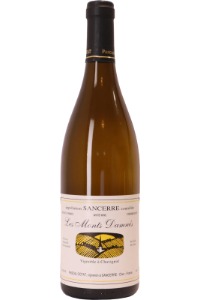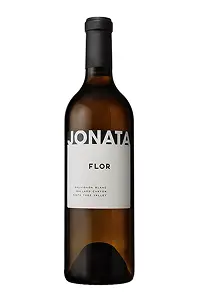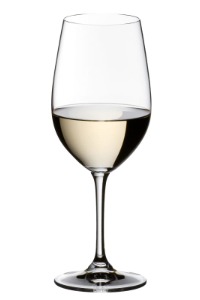10 Sauvignon Blanc bottles worth trying this year
Ready to discover the true versatility of Sauvignon Blanc? This guide explores the top rated Sauvignon Blanc bottles from France, Italy, New Zealand, California and beyond, highlighting unique flavors, ideal food pairings and what makes this iconic white grape so special worldwide.

By
Last updated:
Table of Contents
Best Sauvignon Blanc wine bottles with ratings
Didier Dagueneau Pouilly-Fume Clos du Calvaire 2020
France

Pouilly-Fumé Clos du Calvaire – Didier Dagueneau 2020
Chateau Cheval Blanc Le Petit Cheval Bordeaux Blanc 2021
France
Chateau Cheval Blanc – Le petit Cheval Boedeaux Blanc 2020
France
Georgia Sauvignon Blanc – Lail Vineyards 2022
California, US
Les Culs de Beaujeu – Francois Cotat 2023
France
Sauvignon Blanc – Terlan Quartz 2022
Italy
Te Koko Sauvignon Blanc – Cloudy Bay 2020
New Zealand
Estate Sauvignon Blanc 2023 – Groth 2023
California, US
Venica & Venica Ronco delle Mele Sauvignon 2023
Not every bottle of the Sauvignon Blanc is the same! Our team has carefully selected ten of the best Sauvignon Blanc wines that scored highly amongst wine experts and customers alike to ensure that our selection really resonates with our readers.
Sauvignon Blanc taste profile at a glance
| Sauvignon Blanc Attribute | Details |
|---|---|
| Grape Variety | 100% Sauvignon Blanc |
| Origin | Originally from France, now grown worldwide in notable regions like California, New Zealand and South Africa. |
| Serving Temperature | 45–55°F (7°C-12°C) is ideal for preserving its crisp acidity and freshness. |
| Decanting | Usually not necessary, but you can aerate more complex styles briefly for about 15 to 20 minutes. |
| Aging Potential | Generally best consumed young (between 1-5 years); some premium, oak aged bottles can age for more than 10 years. |
| Flavor Profile | Lime, grapefruit, green apple, passion fruit, lemongrass, freshly cut grass, bell pepper, herbs, flint |
| Structure | Light to medium bodied, high acidity, crisp and refreshing finish |
| Alcohol Content | Typically between 12% to 14% |
| Ideal Glass | Tulip shaped or white wine glass |
| Food Pairing | Goat cheese, shellfish, salads, fresh herbs, light seafood dishes |
| Top Regions | Loire Valley (France), Marlborough (New Zealand), California (USA), Trentino Alto Adige (Italy) |
| Notable Producers | Domaine Didier Dagueneau (France), Cloudy Bay (New Zealand), Duckhorn Vineyards (USA), Elena Walch (Italy) |
The taste profile of Sauvignon Blanc is recognizable from the very first sip. It is zesty and aromatic with undeniable freshness. Depending on where it was grown, the styles may differ but in any glass of Sauvignon Blanc, you can expect to taste lively citrus notes, including lime, grapefruit and lemon. Green and herbal aromas are also present, with hints of bell pepper on its long, persistent finish. Additional undertones of white fruits and mineral character may reflect the unique terroir of the vineyard.
Sauvignon Blanc grapes contain pyrazines, natural compounds that give the wine its bold personality and signature herbaceous and vegetal aromas. The concentration of pyrazines depends mainly on weather conditions while growing, as cooler climates and incomplete ripening increase its levels.
Good Sauvignon Blanc wine brands worth knowing
In both traditional and new world styles, there are several high quality Sauvignon bottles available. However, some stand out for their finesse and the exceptional care involved in vinifying them. Let’s have a look at some Sauvignon Blanc wine brands recognized for their commitment to quality.
Domaine De Ladoucette – Loire Valley, France
Domaine de Ladoucette is the largest and one of the most famous vineyards in Pouilly-Fumé, owned by the Comte Lafond and Ladoucette families since 1787. In 1972, Baron Patrick de Ladoucette took over the winemaking operations at age 20, marking the start of a new dawn for the family winery. He created the first private reserve for a white wine, “Baron de L”, in 1975. This Pouilly-Fumé wine is produced only in exceptional vintages, now recognised as one of the world’s finest and most sought after Sauvignon Blancs. The estate’s legacy continues till today, now expanded to include prestigious Sancerre vineyards, with a focus on combining traditional winemaking with modern techniques.
Comte Lafond Grand Cuvee Sancerre 2023 – Ladoucette – France
Cloudy Bay Vineyards – Marlborough, New Zealand
Cloudy Bay Vineyards is a winery based in Marlborough, New Zealand. It was established by David Hohnen in 1985 as one of the first five wineries founded in that region. The winery released its first Sauvignon Blanc vintage in 1985, which was praised by wine critics globally for its vibrant and pure taste profile. The British writer, Oz Clarke, after tasting it, wrote that New Zealand Sauvignon Blanc is “arguably the best in the world”. Cloudy Bay winery established New Zealand Sauvignon Blanc on the global stage and till today, is celebrated as a pioneer. They grow 3 core varieties of the grape and also make an oak fermented version known as “Te Koko”.
Sauvignon Blanc 2024 – Cloudy Bay – New Zealand
Frog’s Leap Winery – California, USA
Frog’s Leap Winery was founded in 1981 by John Williams and Larry Turley on a former frog farm in Napa Valley. John was formerly a winemaker at Stag’s Leap Wine Cellars and together with Turley, they released their inaugural Sauvignon Blanc in 1982. In 1989, Frog’s Leap became the first Napa Valley Winery to be certified organic and they were also one of the first wineries to rely solely on solar power for their operations. Today, Frog’s Leap is a leading producer of Sauvignon Blanc while staying true to their green practices, including the use of organically grown grapes and dry farmed vineyards.
Sauvignon Blanc 2024 – Frog’s Leap – California
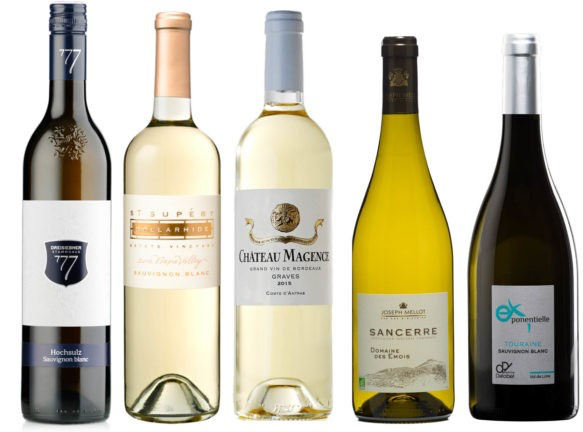
Sauvignon Blanc wine price: how to balance cost and value
As one of the world’s most popular white wines, the Sauvignon Blanc price range varies widely according to the labels, resulting in a broad choice for consumers. But what influences the Sauvignon Blanc cost so much?
The region and terroir in which the wine was produced play a huge role in its pricing, as wines from prestigious areas like Pouilly Fumé or Napa Valley typically cost more. Limited production wines from exceptional vintage years are often higher in quality and this makes them fetch premium price tags too.
For a detailed overview, check out the table below showcasing the price of Sauvignon Blanc across various producers and styles.
1. Entry Level Sauvignon Blanc: Corty Artisan Silex Pouilly-Fumé 2022 – Domaine Moreux-Corty – France
2. Mid Tier Sauvignon Blanc: Honig Wine Sauvignon Blanc Late Harvest – Honig Vineyard and Winery – California
3. Single Vineyard Sauvignon Blanc: Edmond Sancerre Blanc 2020 – Alphonse Mellot – France
4. Prestige Expensive Sauvignon Blanc: Pouilly-Fumé Clos du Calvaire – Didier Dagueneau – France
Top Sauvignon Blanc vintages and how they vary by region
A good Sauvignon Blanc vintage varies by region. A top year in Marlborough might not be the same in the Loire or Italy. Because this grape is sensitive to climate and terroir, each vintage reflects local conditions differently.
Below, we highlight standout Sauvignon Blanc years and what made them special:
| Vintage | Recommended Sauvignon Blanc | Vintage Characteristics |
|---|---|---|
| 2024 | Sauvignon Blanc 2024 – Cloudy Bay – New Zealand | The season was warm, dry and windy in Marlborough. The yields were low, but this resulted in exceptional wines with concentrated and vibrant aromas. |
| 2023 | Sauvignon Blanc 2023 – Tinpot Hut – New Zealand | Perfect growing conditions and a long, slow ripening season in Marlborough yielded wines with assertive fruit flavors and good acidity. |
| 2022 | Metis Sauvignon Blanc 2022 – Klein Constantia – South Africa | This was a successful vintage in South Africa and Germany, characterised by a wet and cold winter that led to vigorous growth during spring. The wines are excellent with good structure and complex fruit flavors. |
| 2020 | Generation XIX Sancerre Blanc 2020 – Alphonse Mellot – France | The warm winter and spring led to an exceptionally early harvest, resulting in balanced wines with good freshness in Sancerre, the Loire Valley and Touraine. |
| 2018 | Bordeaux Pessac Leognan Blanc – Chateau La Louviere – France | Widely celebrated vintage in France due to quality harvests following an ideal growing season. These wines are noted for their citrus and grassy character with good acidity. |
| 2010 | Beringer Wine Sauvignon Blanc – Beringer – California | The season started slowly, but heat spells helped ripen the grapes. Solid vintage in California; well balanced wines with bright aromatics and good structure. |
Top 3 collection Sauvignon Blanc bottles to go for
Sauvignon Blanc is often enjoyed for its fresh flavors, best appreciated when young. But there are exceptions. Some standout bottles from renowned regions like Sancerre and Pouilly-Fumé in France offer serious aging potential. These wines evolve beautifully, rewarding collectors who are looking for more than just an easy drinking white.
Here are 3 good Sauvignon Blanc wines, chosen for their aging potential and collector appeal:
Memento Mori 2018 – Didier Dagueneau – France
Sancerre Les Monts Damnes 2023 – Pascal Cotat – France
Sauvignon Blanc 2022 – Jonata Flor – California
What is Sauvignon Blanc wine and how is it made?
Sauvignon Blanc is a white wine beloved for its high acidity, herbaceous flavors and notes of citrusy, tropical fruit. It is often vinified in a light to medium bodied dry style but Sauv Blanc can also be oaked with complex vanilla and flavors of sweet spice. A globally celebrated wine, the first Friday in May is International Sauvignon Blanc Day!
But how is Sauvignon Blanc wine made?
- Grapes are usually harvested in autumn but the exact timing differs depending on the flavor profile the winemaker aims to impart in the resulting wine. At its most unripe stage, the grape is high in malic acid, which provides sharp tartness and vibrancy. As the grape ripens, it develops flavors of green and green peppers and balanced sugars.
- Skin contact and maceration are optional, depending on the desired style. Traditionally, skin contact is cold and brief (less than 24 hours) to extract aromas and minimize tannins. Extended maceration yields an intense Sauvignon Blanc with increased flavor complexity.
- Fermentation often occurs in stainless steel tanks kept cool, between 50-59°F (10-15°C), as these low temperatures bring out fruit and tropical flavors. Some French winemakers may prefer warmer fermentations (60-64°F or 16-18°C) to highlight mineral aromas in their wines.
- Oak aging is a less common practice, typically for three to six months after fermentation. It softens the bright acidity Sauvignon Blanc is known for, while adding flavors of vanilla, spice and butter. Aging on lees (dead yeast cells) can also impart a creamier texture to the wine.
- After fermentation and aging, the wine is clarified to remove sediment. To achieve this, winemakers may add bentonite or other clarifying agents, chill the wine, or filter it.
- Sauvignon Blanc is bottled within a few months after fermentation, as it is best enjoyed young. It was one of the first fine wines to be bottled with a screwcap for commercial sales, just like Riesling.
Late harvest Sauvignon Blanc is made from grapes left on the vine for longer than usual to concentrate their flavors and sugars. Sometimes, they’re attacked by the beneficial noble rot fungus Botrytis cinerea, which adds layers of complexity.
Sauvignon Blanc grapes
Sauvignon Blanc is a thin skinned, green to pale yellow grape variety that grows in almost any climate worldwide. It buds late but ripens early and is known for its high acidity and aromatic flavor profile. On its own, it is used exclusively to make white wines in different styles, which may be dry and crisp, oaked and complex or late harvest white wines. Here is a brief overview of the types of wine the Sauvignon Blanc grape gives:
- Dry and crisp Sauvignon Blanc is fermented in stainless steel or concrete tanks. It is high in acidity and accompanied by grapefruit and lime notes as well as gooseberry and grassy aromas. Many Sauvignon Blancs from New Zealand are made in this style.
- Creamy and rich Sauvignon Blanc is aged in oak or with its lees. Its texture is richer and creamier and flavors of vanilla, butter and lemon curd are often present. Good examples include classic Bordeaux styles and some California Sauvignon Blancs.
- Late harvest Sauvignon Blanc is a sweet dessert wine made from botrytized grapes left to ripen for longer. Bright acidity is often present, matched by concentrated sugars and complex flavors of honey, apricot and almonds. Sauternes is a late harvest wine made from a blend of Sauvignon Blanc and Sémillon grapes in the Sauternes region of France.
Spotlight on the Sauvignon Blanc wine regions
Sauvignon Blanc thrives in some of the world’s most expressive wine regions, stretching from the French limestone hills of the Loire Valley to New Zealand’s coastal vineyards, with notable plantings in California, Chile, South Africa and Australia. Its adaptability lets each terroir shape a distinctive style ranging from mineral and restrained to vibrant and tropical. In this guide, we’ll explore the top three regions that lead the world in both production volume and overall quality, offering a clear look at where this beloved grape truly shines.
French Sauvignon Blanc
Sauvignon Blanc is a highly adaptable grape variety with the ability to thrive in any climate, cultivated across approximately 121,000 hectares worldwide. However, its native home is in France’s Loire Valley. Here, we can find its classic and most celebrated expressions such as Pouilly Fumé, Sancerre, Sauternes and Pessac-Léognan. Winemakers in France pay careful attention to the terroir of the soil and how it affects their wines. For example, Pouilly Fumé wines are crafted from vines planted in flinty soils with limestone deposits, which is believed to impart a smoky flavor to the wine.
French Sauvignon Blanc can be found in the following main regions:
- The Loire Valley, with its continental climate, is favorable for the slow ripening of the grape. Sauvignon Blanc is vinified here as Pouilly Fumé from the town of Pouilly-sur-Loire, Sancerre from the similarly named commune and Sauvignon de Touraine from Touraine. Sauvignon Blanc in the Loire Valley tends to be complex and rich with perfectly balanced acidity and sugar levels.
- In Bordeaux, especially in Graves, Pessac-Léognan, Entre-Deux-Mers and Sauternes, Sauvignon Blanc is a principal grape. In the first three regions, it is vinified as a dry wine, while it is blended with Sémillon in Sauternes to create a late harvest wine. It is one of the only four white grape varieties permitted in the production of white Bordeaux wine. Bordeaux Sauv Blanc tends to have a fruitier personality than the wines produced in the Loire Valley.
For both Bordeaux and Loire Sauvignon Blanc, the Appellation d’Origine Protégée (AOP) system is in strict control of production standards and guarantees their authenticity.
Italian Sauvignon Blanc from Friuli and Alto Adige
Italian Sauvignon Blanc is primarily grown in the northeastern regions of Friuli-Venezia Giulia and Alto Adige. In these areas, the climate is cool enough to preserve the grape’s elegance and minerality while highlighting notes of citrus and herbs.
In addition to these two main regions, it is also grown in Veneto, Sicily and parts of Emilia-Romagna. While it isn’t a native Italian grape, winemakers are known for making Sauvignon Blanc with crisp acidity and distinct mineral notes, making it an important part of the country’s white wine production.
New Zealand Sauvignon Blanc from Marlborough’s maritime vineyards
New Zealand Sauvignon Blanc became popular in the 1990s, beloved for its distinct flavor intensity. Today, about 70% of the total vineyard plantings in the country are dedicated to NZ Sauvignon Blanc, with Marlborough being responsible for the bulk of these vines. The most desirable planting sites are sandy soils with slate deposits that allow for good drainage. The poor fertility of these sites also encourages lower yields with concentrated flavors. Heavier soils near the Wairau River Valley are known for producing more herbaceous, late ripening soils that give a diversity of flavors, adding a unique element to NZ Sauvignon Blanc.
Fun fact: In Australia too, where reds like Shiraz dominate, cooler regions such as Adelaide Hills and Tasmania produce Australian white wine Sauvignon Blanc with riper fruit and a creamier texture.
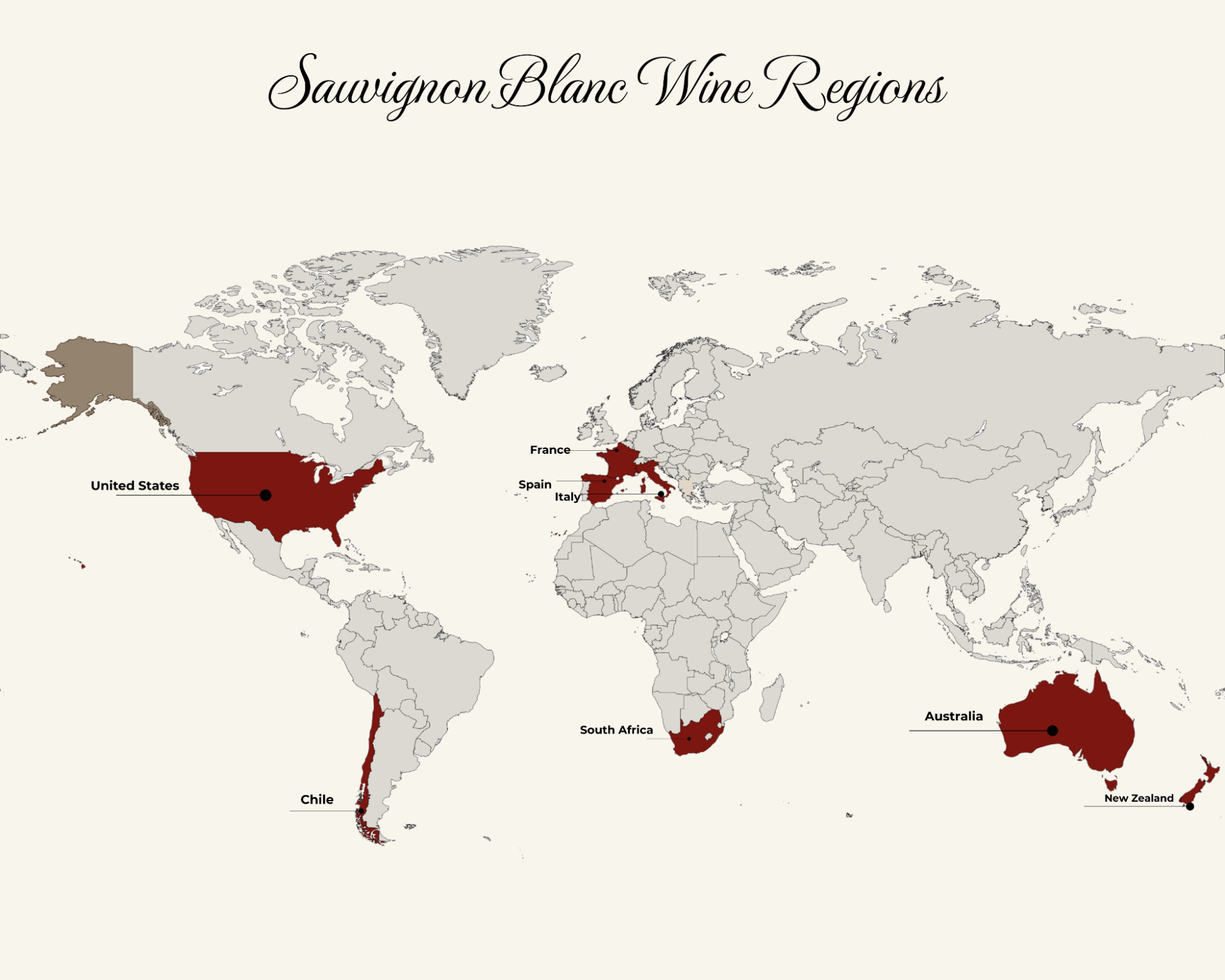
Comparing wines similar to Sauvignon Blanc
Sauvignon Blanc is a crisp, easy drinking white wine bursting with vibrant acidity and floral and fruit notes. It is only natural to wonder about the wines similar to Sauvignon Blanc and what sets them apart.
- Pinot Grigio vs Sauvignon Blanc: Pinot Grigio leans toward subtle pear, apple and soft melon notes with a smooth, light body. Sauvignon Blanc delivers sharper citrus, herbal aromas and brighter acidity. Pinot Grigio suits simple dishes and easy sipping, while Sauvignon Blanc brings more energy and freshness to seafood and herb centered plates.
- Chardonnay vs Sauvignon Blanc: Chardonnay ranges from crisp and mineral to creamy and opulent depending on oak aging and climate, showing apple, citrus or tropical fruit. Sauvignon Blanc is consistently zesty, herbal and high acid. Choose Chardonnay for richer dishes and fuller texture and Sauvignon Blanc when you prefer bright, refreshing flavours that lift food.
In the table below, we break down the differences between these wines and we also introduce some other wines similar to Sauvignon Blanc that you might enjoy!
| Wine / Main Grape | Top Wine | Wine style |
|---|---|---|
| Chardonnay vs Sauvignon Blanc | Chardonnay 2023 – Cakebread Cellars | Crisp and mineral or rich, buttery, and creamy |
| Pinot Grigio vs Sauvignon Blanc | Dessimis Pinot Grigio 2022 – Vie di Romans – Italy | Pinot Grigio is a lighter and more neutral white wine than Sauvignon Blanc, featuring subtle flavors of pear, apple and lemon. |
| Albariño vs Sauvignon Blanc | Alvarinho 2023 – Soalheiro Granit – Portugal | Albariño and Sauvignon Blanc are both crisp and highly acidic, but the latter tends to be more subtle with prominent citrus and saline notes. |
| Gewürztraminer vs Sauvignon Blanc | Altenbourg Gewürztraminer 2023 – Domaine Weinbach – France | Gewürztraminer is more full bodied and aromatic than Sauvignon Blanc. It shows spicy flavors and intense floral notes, which are often absent in Sauvignon Blanc. |
Sauvignon Blanc serving temperature: slightly chilled is the key
Ever had a glass of Sauvignon Blanc lacking its usual aromatic punch and crisp freshness? It might not have been the wine’s fault! Even a good Sauvignon Blanc wine can taste flat if not served properly.
Luckily, a few simple tips can make all the difference:
- Serve slightly chilled, aiming for 45-50°F (or 7-10°C) to highlight the wine’s acidity and delicate aromas.
- No decanting is needed as Sauvignon Blanc is a fresh white wine, ready to drink once you open it up!
- Use a narrow white wine glass; this shape concentrates the tropical notes toward your nose.
- Drink it young, as most bottles are best enjoyed within 1–3 years of release.
The secret to the perfect Sauvignon Blanc serving temperature? Chill it slightly and let the wine do the rest!
Sauvignon Blanc wine pairings decoded
When it comes to pairing food with Sauvignon Blanc, freshness is the name of the game!
Sauvignon Blanc is one of the most versatile white wines at the dinner table. Its bright, fresh character doesn’t overpower your food; rather, it enhances it, making it the perfect match for dishes like fish, cheese and more.
Of course, food and wine pairing is personal and there are no strict rules. But if you want to avoid combinations that dull the flavors, here are a few Sauvignon Blanc wine pairing suggestions to help you get started:
| Food | Best Bottle | Aged | Type & Structure |
|---|---|---|---|
| Lemon chicken piccata, roasted chicken with herbs, grilled pork skewers | Sauvignon Blanc 2023 – Sentium – California | 1-2 years ABV 13% | Distinctive and complex with crisp and floral aromatics that linger. Medium bodied with hints of fig, stone fruit and lemon on the finish. |
| Prosciutto, speck, mild salamis, pâté, herb infused ham, bresaola | Sauvignon Blanc 2023 – Keever Vineyards and Winery – California | 1-2 years ABV 13.9% | Soft acidity, highly aromatic nose, pale gold in color. |
| Pan seared scallops, grilled prawns with garlic, moules marinière, cioppino, baked halibut | Sancerre Les Chasseignes 2022 – Domaine Fouassier – France | 1-2 years ABV 12.5% | Fruit forward with a round mid palate. Aromas of Fuji apple, star fruit, lemon zest and dried white blossom are detectable on the nose. |
| Thai green curry, sashimi snapper with wasabi soy dip, spring rolls | Ried Kapellenweingarten Sauvgnon Blanc 2020 – Weingut Sattlerhof – Austria | 1-3 years ABV 12.5% | Classic Sauvignon Blanc with mouthwatering acidity, notes of ripe pear fruit, yellow peppers, fennel, green apple and nectarine. |
| Goat Cheese, Feta, Ricotta, Mozzarella, Brie, Harvati, Gruyère | Sauvignon Blanc 2022 – La Pelle Wines – California | 1-2 years ABV 12.5% | Crisp acidity and a mineral core with layered notes of lime, grapefruit, jasmine and wet river stone. |
| Fish taco, ceviche, guacamole, queso fundido, quesadilla | Sauvignon Blanc 2023 Spottswoode – California | 1-2 years ABV 13.8% | Medium bodied with high acidity and crisp flavors of grass, citrus peel, white peach and floral notes of lime and cassis bud. |
| Pesto pasta, pasta primavera, seafood risotto, mushroom risotto, lasagna | Ronco delle Mele Sauvignon 2023 – Venica & Venica – Italy | 1-2 years ABV 13.5% | Well structured with distinct warm and fruity notes of yellow peach, melon and classic vegetal aromas. |
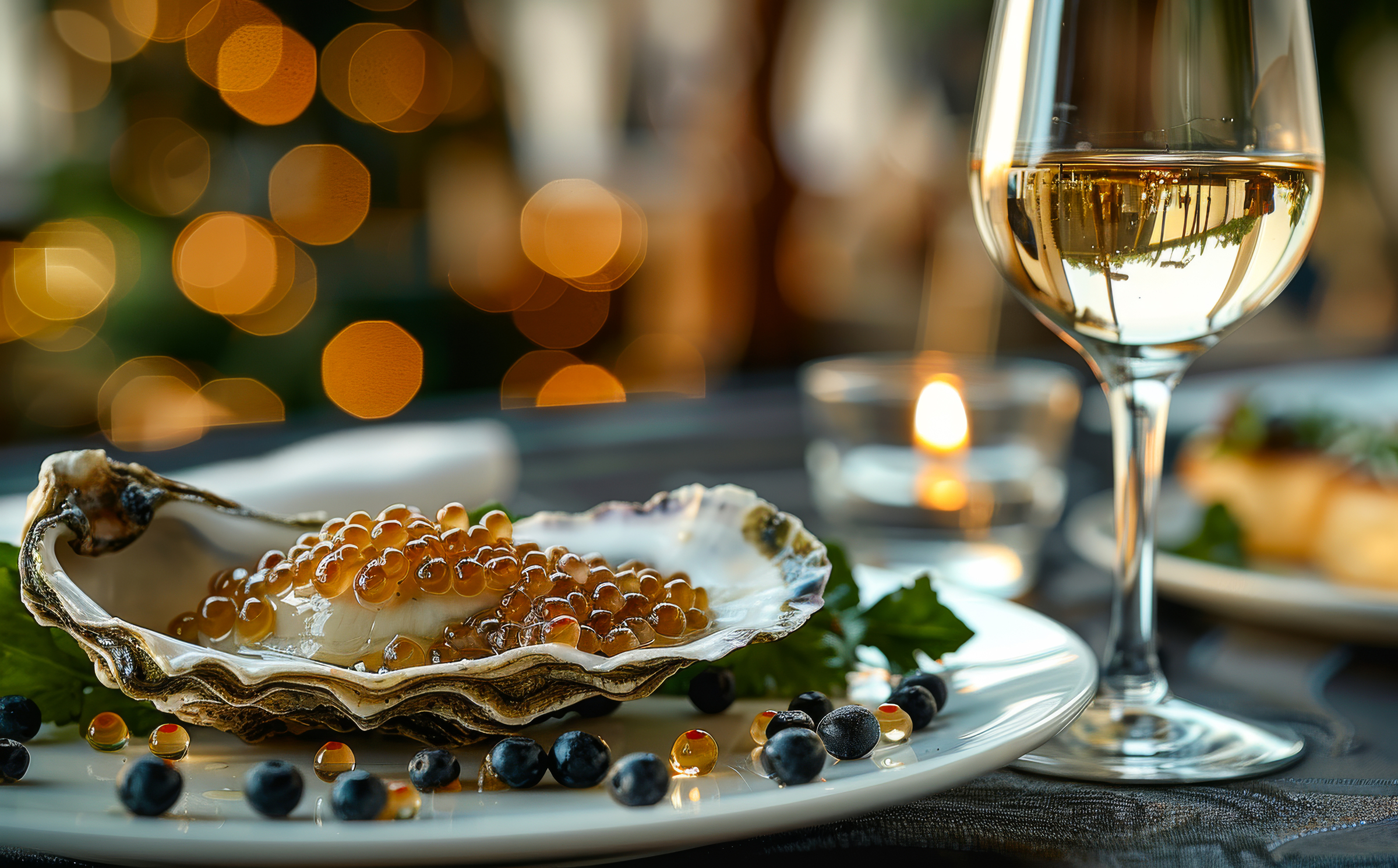
Sauvignon Blanc: tips for beginners
Sauvignon Blanc is one of the most refreshing and easy to love white wines out there, making it perfect for you if you’re just dipping your toes into the world of wine. Follow along as we uncover some tips to help you get the best out of your tasting experience:
- Go for young bottles that are under 3 years old. This is when Sauvignon Blanc is at its best, bursting with vibrant fruit and herbaceous notes.
- Serve it slightly chilled at a temperature between 45°F and 50°F (7-10°C) to enhance its crispness, acidity and fruit flavors. Serving it too warm can make the alcohol overwhelming, while an overly cold temperature can diminish the aromas.
- Pour it into a white wine glass with a narrow bowl tapering to a slightly narrower opening. This shape preserves the wine’s aromas, channeling it to the tip of your tongue while emphasizing its acidity and freshness.
To help you start off on the right foot, here are two bottles of Sauvignon Blanc worth trying out:
| Sauvignon Blanc Style | Our Recommendation | Best to Pair with |
|---|---|---|
| Young Sauvignon Blanc (under 5 yrs) | Sauvignon Blanc 2023 – Keever Vineyards and Winery – California | Fresh seafood, goat cheese, spring vegetables |
| Mature Sauvignon Blanc (5+ yrs) | Duchess Barrel Fermented Marlborough Sauvignon Blanc 2021 – State Landt – New Zealand | Aged goat cheese, roasted chicken, creamy risotto |
Unlock the flavor with the right Sauvignon Blanc wine glasses
Sauvignon Blanc wine glasses are typically smaller with narrower openings, designed to preserve crisp aromas and maintain cool serving temperatures. Do not skip this part: to truly enjoy Sauvignon Blanc, the right glass can make all the difference!
Below, you’ll find a quick guide to help you choose the best glass for every style of Sauvignon Blanc.
Riedel Vinum Riesling-Zinfandel Glasses (Set of 2) 13 oz – 8.25 inches
Spigelau White Wine Glasses (Set of 4)
Riedel Individual WineWings Sauvignon Blanc Glass 28.85 oz – 9.75 inches
FAQs Sauvignon Blanc
What is a good Sauvignon Blanc wine brand?
A good Sauvignon Blanc wine brand includes trusted producers like Domaine De Ladoucette from France’s Loire Valley, Cloudy Bay Winery from New Zealand and Frog’s Leap Winery in California, US. These producers are pioneers that have shaped the global history of Sauvignon Blanc wines, known for their dedication to quality and consistency, capturing the grape’s signature freshness, vibrant acidity and aromatic intensity.
Where is the best Sauvignon Blanc wine from?
The best Sauvignon Blanc wine often comes from regions like Sancerre and Pouilly-Fumé in France and some regions of California like Napa valley. For instance, our top wine, Didier Dagueneau’s Pouilly-Fumé Clos du Calvaire 2020, is a classic smoky wine from Pouilly-Fumé. However, Italy’s Friuli and Trentino also produce outstanding bottles, alongside Chile and South Africa, with each one offering unique expressions of what makes the best Sauvignon Blanc wine around the world.
What Italian wine is closest to Sauvignon Blanc?
The Italian wine that is closest to Sauvignon Blanc is Vernaccia, known for its crisp acidity and subtle herbal notes. Some Friulano wines from northern Italy also come quite close to Sauvignon Blanc with their crisp acidity and herbal notes. However, there are also several international alternatives like Verdejo, Picpoul, Albariño, and Vinho Verde that share a similar fresh, zesty character.
Is Sauvignon Blanc dry?
Yes, Sauvignon Blanc is a dry white wine. It’s characterized by its high acidity and minimal sweetness, giving it a clean and refreshing taste. The dryness helps emphasize its lively flavors, of citrus, green apple and fresh herbs, making it a great match for light, savory foods.
Is Sauvignon Blanc a white wine?
Yes, Sauvignon Blanc is a white wine produced from green grapes. It is recognized for its crisp acidity, light to medium body and vibrant flavors. Common tasting notes include citrus, green apple, fresh herbs and tropical fruits. This white wine is enjoyed globally, often served slightly chilled between 45-50°F (7-10°C) and pairs well with lighter dishes, making it especially popular during warmer seasons.
What is Sauvignon Blanc ABV?
Sauvignon Blanc usually has an Alcohol By Volume (ABV) between 11.5% and 13.5%. The amount of alcohol can change depending on where the grapes grow and how the wine is made. In warmer places, the alcohol tends to be higher, while cooler climates yield wines with less alcohol, keeping them fresh and crisp.
How many calories are in a bottle of Sauvignon Blanc wine?
A typical 750ml bottle of Sauvignon Blanc wine contains about 600 to 625 calories. When considering Sauvignon Blanc wine calories, it’s important to note that the calorie content varies based on alcohol and sugar levels. Dry Sauvignon Blanc wines tend to have fewer calories, making them a lighter option compared to sweeter wines, especially those with higher residual sugar.
What is the Sauvignon Blanc wine grape?
The Sauvignon Blanc wine grape is a green to pale yellow skinned variety primarily used to make dry white wine. Native to France’s Loire Valley, it is now cultivated in wine regions around the world, including New Zealand, California and South Africa. Known for its vibrant acidity and expressive aromas, Sauvignon Blanc often features flavors of citrus, tropical fruit, green apple and freshly cut grass.
What are Sauvignon Blanc wine prices?
Sauvignon Blanc wine prices generally range from $20 to $60 for most bottles, depending on the producer, region and vintage. Premium selections from renowned areas like Napa Valley or France’s Sancerre region can exceed $100 or even $300. Many excellent and affordable options from California and New Zealand offer great quality without a high price tag.
What are the best years for Sauvignon Blanc wine?
The best years for Sauvignon Blanc wine depend on the region and weather conditions during the growing season. Generally, recent vintages from 2018 to 2022 have been excellent, offering fresh acidity and vibrant, complex flavors. In regions like New Zealand and California, cooler, balanced growing seasons create the most flavorful and well structured Sauvignon Blanc wines
How long can you keep a bottle of Sauvignon Blanc open?
Once opened, Sauvignon Blanc can typically be kept fresh for about 3 to 5 days if properly sealed and refrigerated. Its natural acidity helps preserve the wine’s flavors and crispness for a short time. However, after several days, the wine will begin to lose its freshness and aroma. To enjoy the best taste, it’s recommended to finish the bottle within this timeframe.
